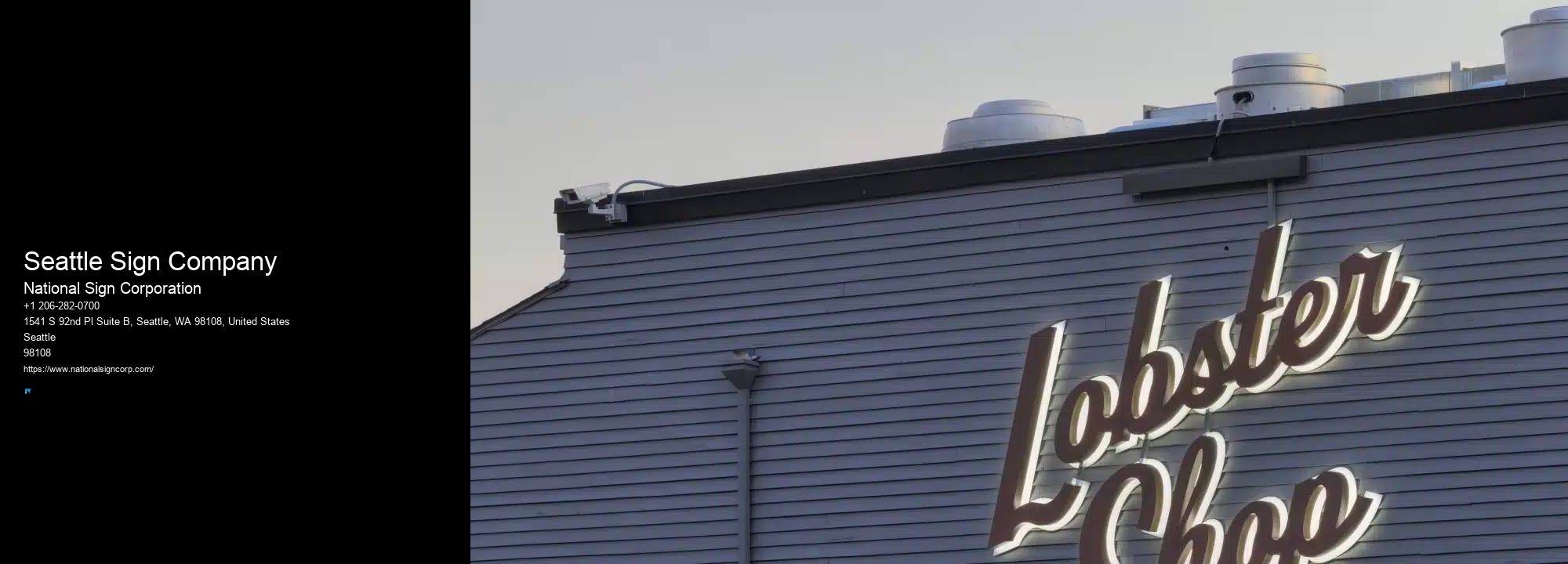

It's the bright, flashing sign that catches your eye, isn't it? They're well-versed in the structural and electrical requirements necessary to ensure your sign isn't only visually appealing but safe and durable.
As a professional curious about the intersection of creativity and technology in the art of sign making, you'll find the behind-the-scenes processes and the portfolio of success stories particularly intriguing. You won't have to worry about technical issues; they've got it covered. You're investing in more than just a sign; you're investing in your brand's visibility and longevity. You won't have to worry about the technical details; they've got the expertise to ensure your sign is mounted securely and connected correctly.
This adaptability makes your brand more engaging and responsive to market trends or seasonal changes. RGB lighting, standing for red, green, and blue, allows you to mix these colors to produce a wide range of hues, giving you unlimited creativity in designing your sign's look. That's what you get with National Sign Corporation.
As you dive into creating custom artwork signs for your business with the National Sign Corporation, you're presented with an opportunity to showcase your commitment to sustainability. These signs can be crafted from various materials, including metal, acrylic, and foam, offering a customizable depth and texture that'll surely catch the eye.
Seattle is situated on an isthmus between Puget Sound, an inlet of the Pacific Ocean, and Lake Washington. It is the northernmost major city in the United States, located about 100 miles (160 km) south of the Canadian border. A gateway for trade with East Asia, the Port of Seattle is the fourth-largest port in North America in terms of container handling as of 2021.
They start with a deep dive into what makes your brand tick, pulling out the threads that will weave the fabric of your visual identity. These aren't distant dreams; they're the next steps in signage technology.
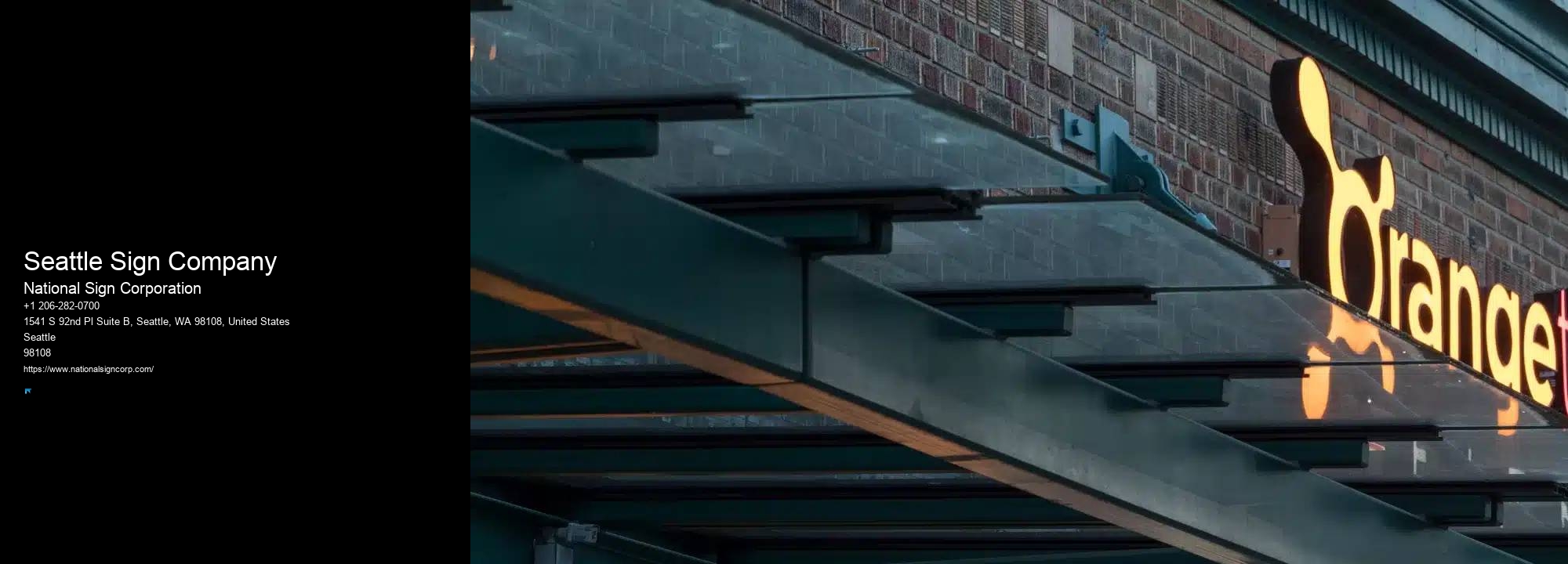
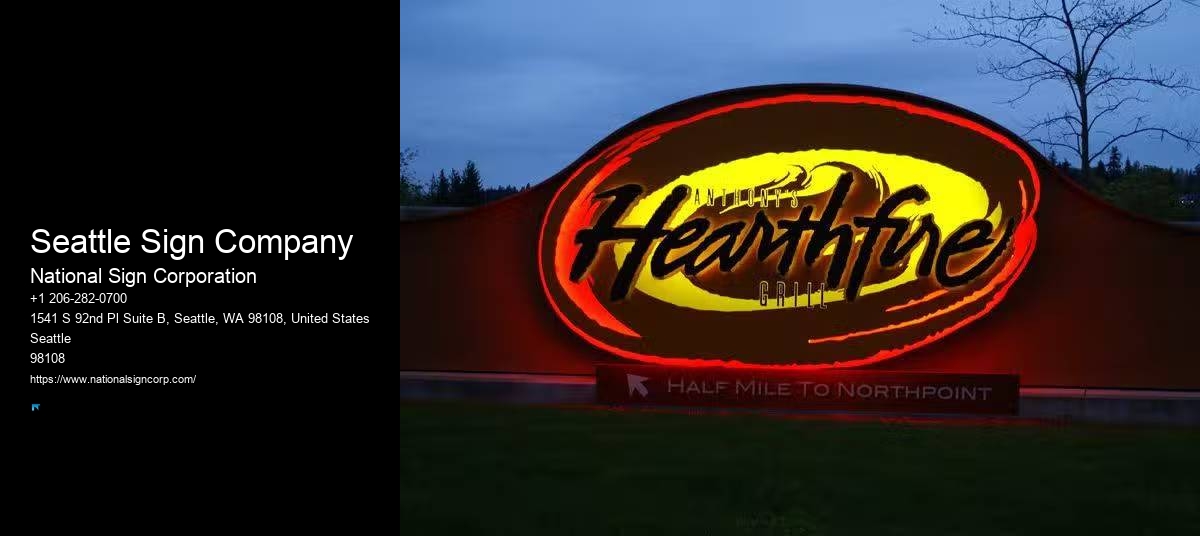
It allows us to produce complex shapes and designs that were previously unthinkable, giving your signage a unique and customized look that captures attention. Whether it's regular cleaning, electrical checks, or timely repairs, we've got you covered. You're not just entering a building; you're being introduced to a story, a brand identity that's as vivid and impactful as the business it represents. We understand the importance of innovation in staying ahead, so we've invested in the latest digital fabrication tools and LED lighting systems. It's not just about the end product; it's about the journey there.
You're no longer limited by traditional signage options. Moreover, their team of experts doesn't just react to issues. In a city full of signs, let National Sign Corporation make yours stand out. It's a testament to their ability to blend tradition with innovation.
They also have a longer lifespan, reducing the need for frequent replacements and maintenance. They're incredibly versatile, capable of being molded into almost any shape or design, allowing your creativity to shine as brightly as the signs themselves.
You can incorporate various elements, including LED lighting, digital displays, or changeable message boards, to make sure your sign isn't only visible day and night but also communicates effectively with your target audience. Unlike traditional signage options, LEDs have a longer lifespan, ensuring your message shines bright for years to come without frequent replacements or maintenance hassles. This journey begins the moment you share your initial ideas. LED technology is known for its low energy consumption, which means you'll see a drastic reduction in your electricity bills. This not only ensures your sign's longevity but also enhances its visual appeal, making your brand shine brighter than the rest.
They understand that your business isn't like any other, and your signage shouldn't be either. This shows not just their experience, but also their ability to deliver results that satisfy their clients' needs. Plus, we'll give you practical tips on how to care for your sign, extending its lifespan and keeping it looking its best. Think recycled materials, solar-powered lights, and biodegradable inks.
It's not just about standing out; it's about resonating with your target audience in a way that's both memorable and meaningful. Building on our foundation in traditional craftsmanship and modern technology, we now explore the realm of innovative design techniques to elevate your brand's presence. They partnered with National Sign Corporation, and the result was nothing short of miraculous. Event Directional Signs In a city bustling with competition, standing out is key.
Plus, durable signs mean less frequent replacements, saving you money in the long run. Window Decals You'll soon see the rollout of smart signs capable of real-time updates, interactive features, and even environmental monitoring to add value beyond mere advertisement. It sets a standard, encouraging others to up their game, which in turn fosters a vibrant, competitive business environment. It's about being bold, being seen, and ultimately, being remembered.
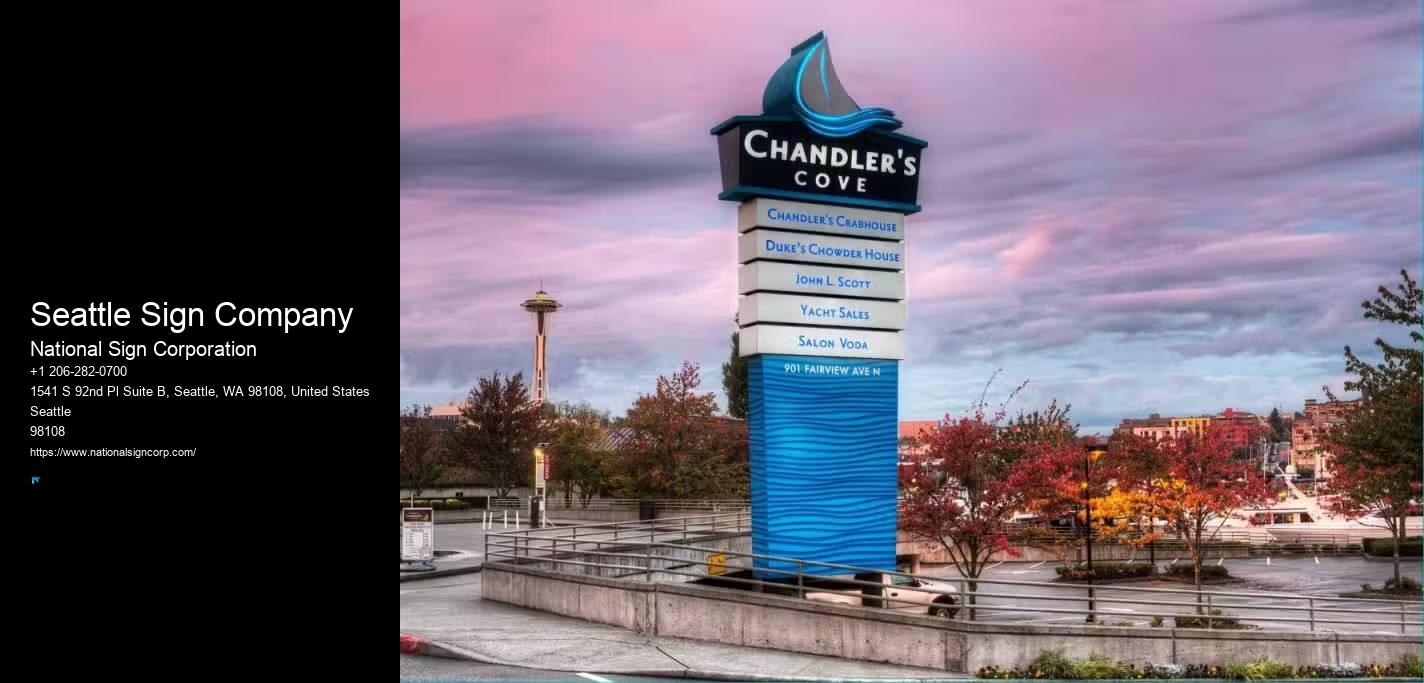
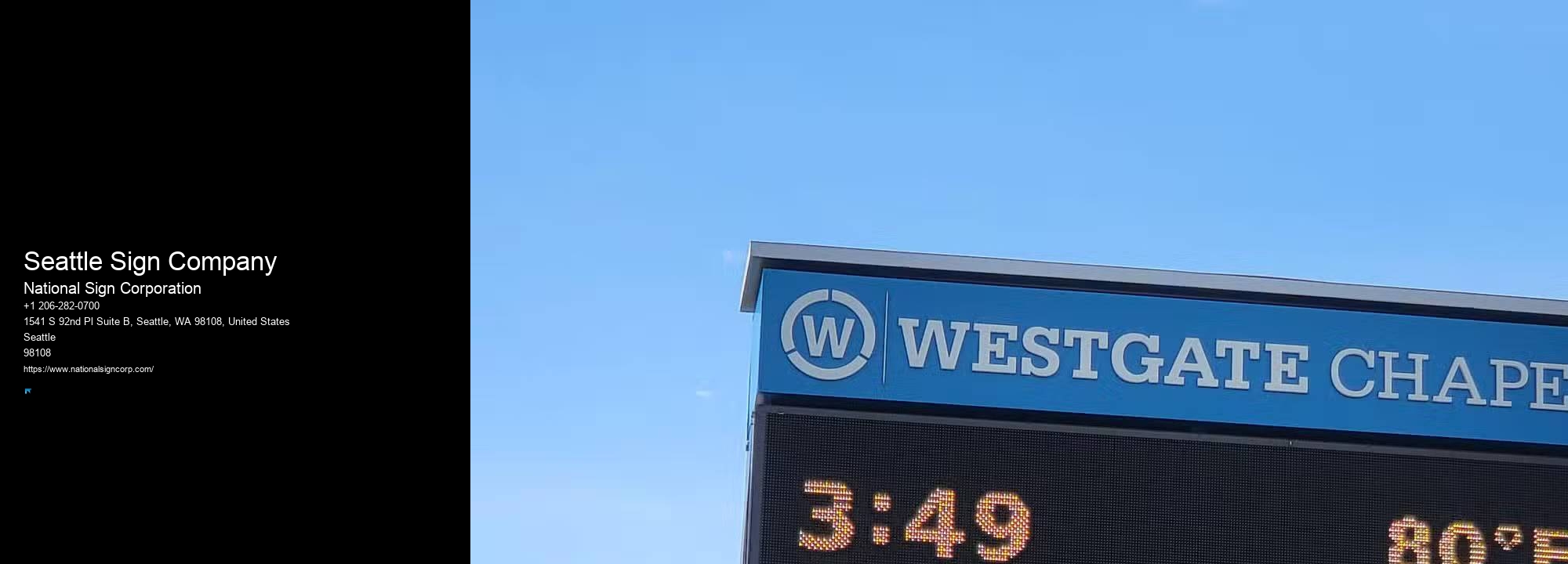
You'll be glad to know that advancements in technology have made it easier than ever to create signs that are both visually stunning and kind to the earth.
Shoot us an email with your inquiries, project ideas, or even just to say hi. Signs, especially those illuminated, can consume a considerable amount of energy.
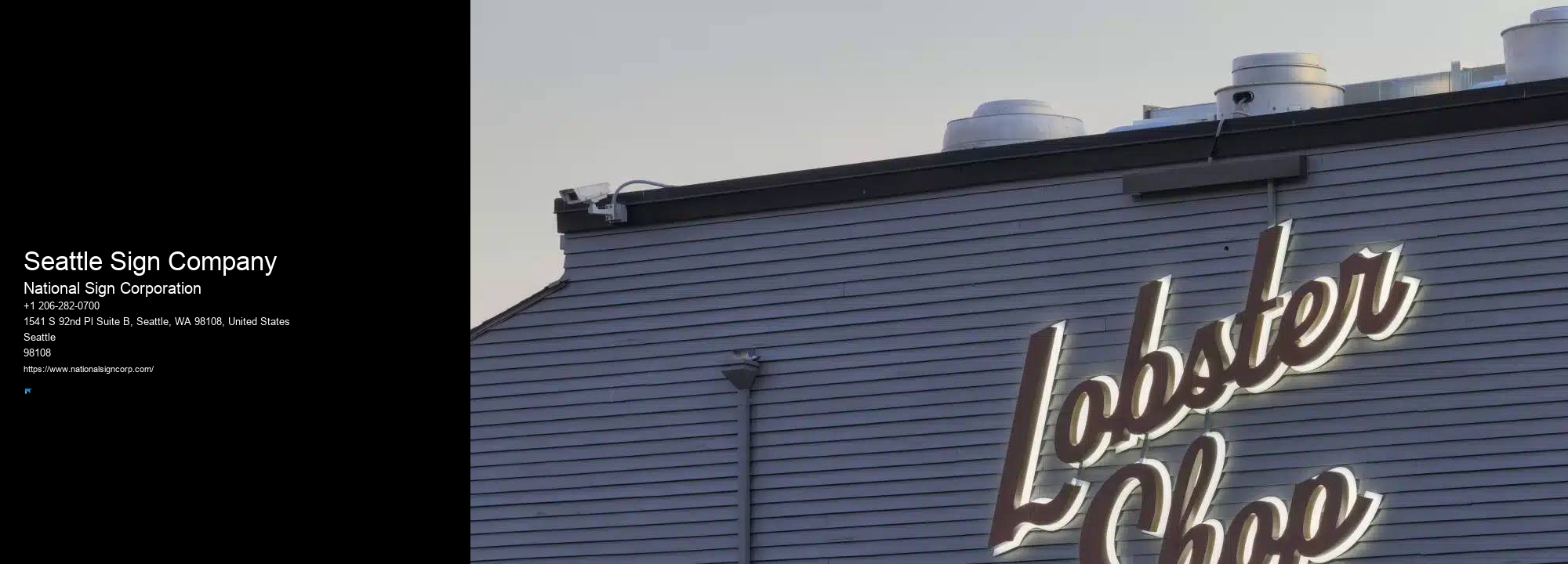



A sign is an object, quality, event, or entity whose presence or occurrence indicates the probable presence or occurrence of something else.[1] A natural sign bears a causal relation to its object—for instance, thunder is a sign of storm, or medical symptoms a sign of disease. A conventional sign signifies by agreement, as a full stop signifies the end of a sentence; similarly the words and expressions of a language, as well as bodily gestures, can be regarded as signs, expressing particular meanings. The physical objects most commonly referred to as signs (notices, road signs, etc., collectively known as signage) generally inform or instruct using written text, symbols, pictures or a combination of these.
The philosophical study of signs and symbols is called semiotics; this includes the study of semiosis, which is the way in which signs (in the semiotic sense) operate.
Semiotics, epistemology, logic, and philosophy of language are concerned about the nature of signs, what they are and how they signify.[2] The nature of signs and symbols and significations, their definition, elements, and types, is mainly established by Aristotle, Augustine, and Aquinas. According to these classic sources, significance is a relationship between two sorts of things: signs and the kinds of things they signify (intend, express or mean), where one term necessarily causes something else to come to the mind. Distinguishing natural signs and conventional signs, the traditional theory of signs (Augustine) sets the following threefold partition of things: all sorts of indications, evidences, symptoms, and physical signals, there are signs which are always signs (the entities of the mind as ideas and images, thoughts and feelings, constructs and intentions); and there are signs that have to get their signification (as linguistic entities and cultural symbols). So, while natural signs serve as the source of signification, the human mind is the agency through which signs signify naturally occurring things, such as objects, states, qualities, quantities, events, processes, or relationships. Human language and discourse, communication, philosophy, science, logic, mathematics, poetry, theology, and religion are only some of fields of human study and activity where grasping the nature of signs and symbols and patterns of signification may have a decisive value. Communication takes place without words but via the mind as a result of signs and symbols; They communicate/pass across/ messages to the human mind through their pictorial representation.


The word sign has a variety of meanings in English, including:
St. Augustine was the first man who synthesized the classical and Hellenistic theories of signs. For him a sign is a thing which is used to signify other things and to make them come to mind (De Doctrina Christiana (hereafter DDC) 1.2.2; 2.1.1). The most common signs are spoken and written words (DDC 1.2.2; 2.3.4-2.4.5). Although God cannot be fully expressible, Augustine gave emphasis to the possibility of God's communication with humans by signs in Scripture (DDC 1.6.6). Augustine endorsed and developed the classical and Hellenistic theories of signs. Among the mainstream in the theories of signs, i.e., that of Aristotle and that of Stoics, the former theory filtered into the works of Cicero (106-43 BC, De inventione rhetorica 1.30.47-48) and Quintilian (circa 35–100, Institutio Oratoria 5.9.9-10), which regarded the sign as an instrument of inference. In his commentary on Aristotle's De Interpretatione, Ammonius said, "according to the division of the philosopher Theophrastus, the relation of speech is twofold, first in regard to the audience, to which speech signifies something, and secondly in regard to the things about which the speaker intends to persuade the audience." If we match DDC with this division, the first part belongs to DDC Book IV and the second part to DDC Books I-III. Augustine, although influenced by these theories, advanced his own theological theory of signs, with whose help one can infer the mind of God from the events and words of Scripture.

Books II and III of DDC enumerate all kinds of signs and explain how to interpret them. Signs are divided into natural (naturalia) and conventional (data); the latter is divided into animal (bestiae) and human (homines); the latter is divided into non-words (cetera) and words (verba); the latter is divided into spoken words (voces) and written words (litterae); the latter is divided into unknown signs (signa ignota) and ambiguous signs (signa ambigua); both the former and the latter are divided respectively into particular signs (signa propria) and figurative signs (signa translata), among which the unknown figurative signs belong to the pagans. In addition to exegetical knowledge (Quintilian, Institutio Oratoria 1.4.1-3 and 1.8.1-21) which follows the order of reading (lectio), textual criticism (emendatio), explanation (enarratio), and judgment (iudicium), one needs to know the original language (Hebrew and Greek) and broad background information on Scripture (DDC 2.9.14-2.40.60).
Augustine's understanding of signs includes several hermeneutical presuppositions as important factors. First, the interpreter should proceed with humility, because only a humble person can grasp the truth of Scripture (DDC 2.41.62). Second, the interpreter must have a spirit of active inquiry and should not hesitate to learn and use pagan education for the purpose of leading to Christian learning, because all truth is God's truth (DDC 2.40.60-2.42.63). Third, the heart of interpreter should be founded, rooted, and built up in love which is the final goal of the entire Scriptures (DDC 2.42.63).
The sign does not function as its own goal, but its purpose lies in its role as a signification (res significans, DDC 3.9.13). God gave signs as a means to reveal himself; Christians need to exercise hermeneutical principles in order to understand that divine revelation. Even if the Scriptural text is obscure, it has meaningful benefits. For the obscure text prevents us from falling into pride, triggers our intelligence (DDC 2.6.7), tempers our faith in the history of revelation (DDC 3.8.12), and refines our mind to be suitable to the holy mysteries (DDC 4.8.22). When interpreting signs, the literal meaning should first be sought, and then the figurative meaning (DDC 3.10.14-3.23.33). Augustine suggests the hermeneutical principle that the obscure Scriptural verse is interpreted with the help of plain and simple verses, which formed the doctrine of "scriptura scripturae interpres" (Scripture is the Interpreter of Scripture) in the Reformation Era. Moreover, he introduces the seven rules of Tyconius the Donatist to interpret the obscure meaning of the Bible, which demonstrates his understanding that all truth belongs to God (DDC 3.3.42-3.37.56). In order to apply Augustine's hermeneutics of the sign appropriately in modern times, every division of theology must be involved and interdisciplinary approaches must be taken.[3]
I have done business with National Sign for over 30 years as a Safeway store manager in Seattle, a store manager for a grocery independent in Spokane and now in Oregon. NSC does what they say they will do. They are on time, professional, and thorough. NSC communicated with me throughout the project. All their signs have looked great. I highly recommend.
I began doing business with National Sign back in 1989 with a relatively minor project. Their diligence and attention to detail ensured the project's success. 29 years later the two signs are still looking great and seeing them reminds me why I have chosen National to be my sole branding partner.
As an architect, I rely on professionals like National Sign for my projects. They are very knowledgeable, they help advise me on the very complicated codes for signage, and they are capable of integrating so many different materials: wood, metal, glass, etc... Their shop is like a workman's fantasy camp!
First off I don't like to leave reviews, but for this company I will. We are a business that has been around over 50 years looking for some bulbs to be replaced in our Honda sign. First person tells me they are way backed up which i have no problem with, and then tells me that unless i am a current customer they will not take me on, I thought businesses wanted new business, if we turned people away we would not be here, then I get transferred to a women who tells me they are 3 weeks out, no problem i say i just need them fixed, I told her the business name and she proceeds to tell me she needs address pictures of sign and a bunch of other bs stuff. I said can 't you just google us and you will see the sign and all the info she would need. She said no i can't look it up. To sum up my frustration I decided to take my business elsewhere based on this companies lazy employees not wanting to take a sec. to use the amazing tool we have called google. They are local and I wanted to support them. If I found out one of my employees had a conversation like this with a potential customer they would be fired on the spot. At the rate they are going they sure won't have a long future turning new business away. Current business always drys up and they should always be looking for new customers.
We've worked with National on several large-scale signage projects and they're excellent. The team is creative, responsive, and the final product is beautiful. I highly recommend them.
You're asking about adapting sign solutions for businesses in historic districts with strict rules. They've indeed tailored signs to meet these unique requirements, ensuring compliance while maintaining the intended aesthetic and branding goals.
You're wondering how the permit process for signage is handled across Seattle's various municipalities? They navigate local regulations, ensuring your sign complies and secures the necessary permits, making the entire process hassle-free for you.
To ensure their signs' physical safety, they use durable materials and secure installations. They consider weather conditions and high-traffic areas, performing rigorous testing to withstand the elements and protect against wear and tear.